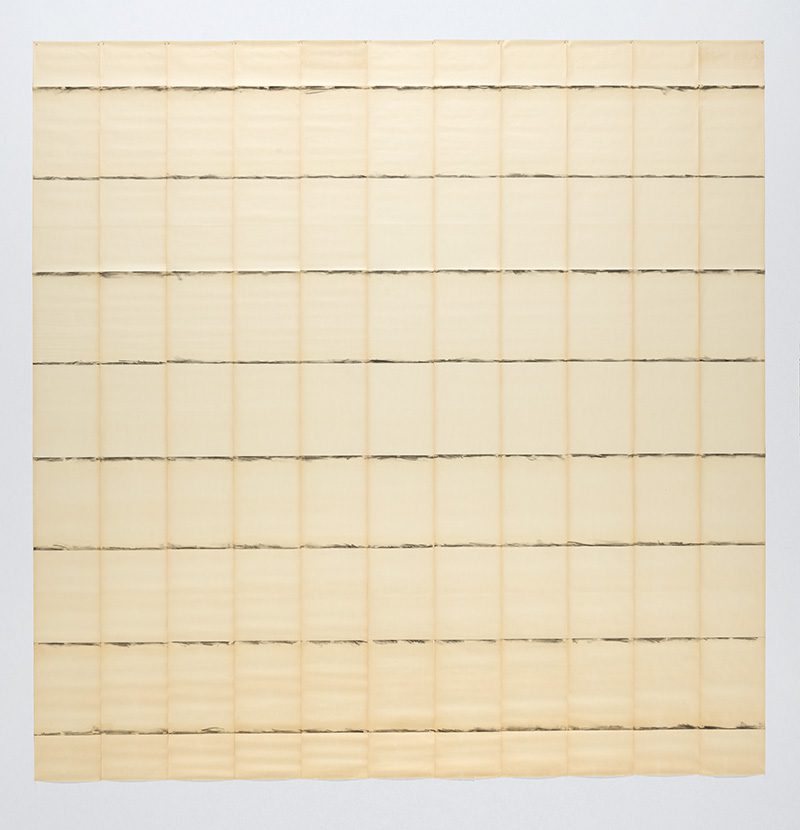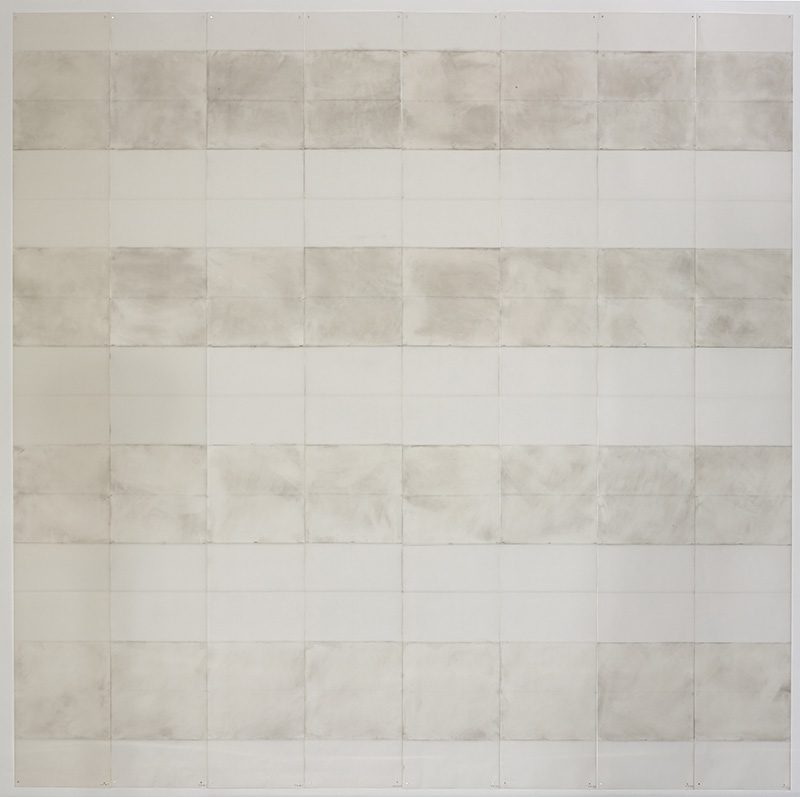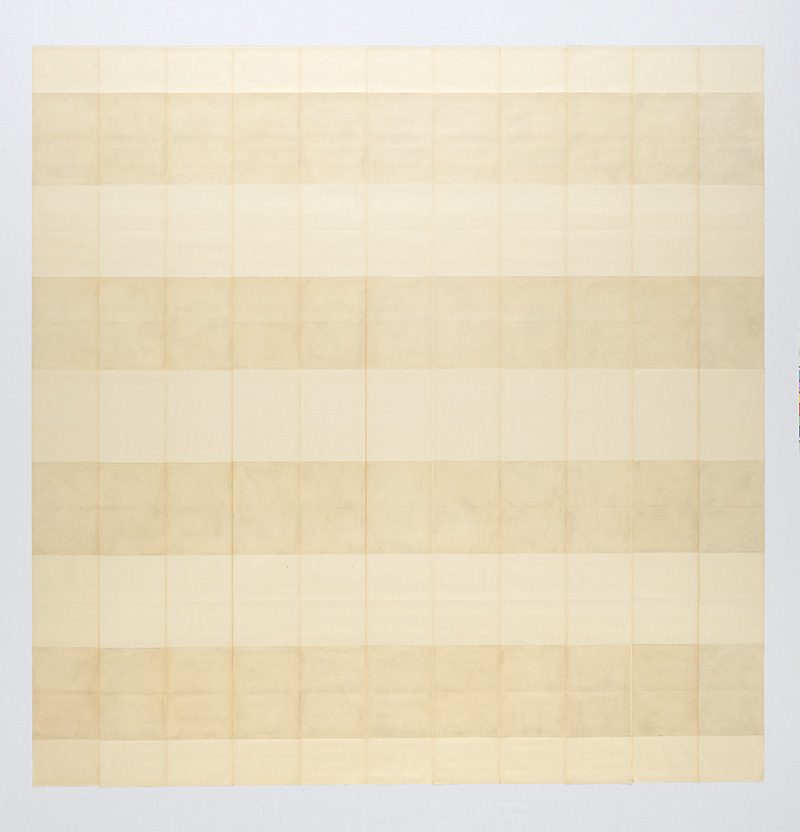ART CITIES:Paris-Michel Parmentier
 Michel Parmentier was born in 1938 in Paris and studied at the École des Métiers d’Art. While there, he met Daniel Buren with whom he founded BMPT in 1966, With Olivier Mosset and Niele Toroni, the group put on provocative happenings and created minimalist works that had the drastic intention of proclaiming the refusal of painting.
Michel Parmentier was born in 1938 in Paris and studied at the École des Métiers d’Art. While there, he met Daniel Buren with whom he founded BMPT in 1966, With Olivier Mosset and Niele Toroni, the group put on provocative happenings and created minimalist works that had the drastic intention of proclaiming the refusal of painting.
By Efi Michalarou
Photo: Galerie Loevenbruck Archive
Since December 1965, Parmentier’s work has consisted of enormous canvases covered with monochrome horizontal stripes, 38cm high, which alternate with white strips. These works are made using pliage, a technique invented in 1960 by Simon Hantaï, which became Parmentier’s only working method from this moment, as a way of breaking with the modernist monochrome. He dedicated himself to these paintings for three years, modifying the colour of the stripes each year: blue in 1966, grey in 1967, red in 1968, in accordance with the all-over principle. After which the canvases were unfolded and presented, alternating 38 cm horizontal bands of colour with white bands of the same width. After a break of a few years, in 1983 the artist took up his work where he left off. All Parmentier’s works are influenced by radicalism and a refusal to compromise on form or ideology. His canvases are not fed by discourses and interpretations; his painting is just painting, without subjectivity or expressiveness. There are only his stripes, neutral and repetitive. Galerie Galerie Loevenbruck presents a solo exhibition with works of Michel Parmentier. “22 avril 1986” is the title of his first work on paper. This new support came in rolls, which Parmentier cut into strips of equal length and width and then he pre-folded and kept in unused state. The assemblage of these strips varied from one work to another, with variations inside the horizontal strips covered with matter and not just uniformly painted and coloured but partially covered in the first works with lines in graphite, deliberately allowing a glimpse of the quasi-silence in the mesh of regularly spaced drawn and placed marks. “17 juillet 1989”, with its powder of graphite rubbed on paper, introduces the tension between the spread, rubbed material and the support. This inscription/erasure duality is also at work in similar pieces, albeit with slight differences. With “12 octobre 1989” Parmentier reprised the principle applied to the previous work, except that for the first time he introduced tracing paper as the intermediary/mediator between the wall on which the work is fixed, now visible through the new support, and the “rubbed charcoal”.
Info: Galerie Loevenbruck, 6 rue Jacques Callot, Paris, Duration: 3/6-16/7/16, Days & Hours: Tue-Sat 11:00-19:00, http://loevenbruck.com


